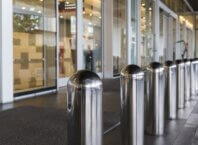Conventional plastering and painting of internal or external walls after renovations or repairs are a thing of the past. Textured render finishing is a process by which the surface of external or inner walls is given a textured appearance. This is achieved by applying a special mixture called render on the wall instead of plaster. The textured render finish not only has good aesthetics but also provides protection to the wall against sun, rain and other elements.
Textured render finish is obtained by using a render. The constituents of a render and their proportions determine its properties. The basic ingredients of any render have been listed here.
- Binding agent imparts strength to the render and makes the different components adhere together. Binding agent is also responsible for the moisture-resistant properties of the render. Cement, clay, gypsum or lime is commonly used as a binding agent.
- Water is required for workability of the render and helping the binding agent in functioning properly.
- Structural filler such as sand or other aggregates are used for making up the major percentage of the render.
- Additives are chemicals which are added to the render to alter its elasticity, colour, durability and workability. Commonly used chemicals are acrylic, silicon or polymer.
- Fibres are used to make the render more elastic and improve its tensile strength. The common fibres used in the renders are fiberglass fibres or nylon mesh.
Types of render finishes

Textured render finish of various kinds can be achieved by applying different types of renders. Some of them have been mentioned here.
- Lime render finish is suitable for walls made of porous bricks or low-quality stones. This is because lime render absorbs the water during rains and prevents it from reaching the wall. The water is then released into the atmosphere by evaporation. Lime render can also be used on inner walls. It is suitable for bricks, stones, straw and rubble-built walls. Lime render is considered highly appropriate for timber framed buildings and old buildings.
- Pebble dash render finishing features wet mortar to which pebbles are added. This is a very decorative type of textured render finish for walls. The mortar used is cement although lime was used a mortar in the earlier times.
- Sand and cement render finish is harder than lime render finish. The render consists of Portland cement and sand. Sand and cement render finish should not be applied on old walls because it is less flexible than lime render finishing and can crack due to movement of substrate. In newly constructed buildings, the substrate does not move much which reduces the risk of cracking. Additives can be added to the render but the inflexibility does not improve much. Sand and cement render is easy to apply and is cheap.
- Acrylic textured render finish is a very aesthetically appealing finish. The render consists of acrylic aggregates which are responsible for imparting a colourful and attractive finish to the wall. Acrylic render can either be applied on a base coat of a render or a prepared substrate directly.
- Scratch render finish has a weathered stone appearance. The render is cement based. The finish appears very attractive.
Appearances

The most popular type of textured render finish appearances are as follows.
- Semicircular trowel marks on the surface imparts a classic appearance to the wall.
- Brush strokes on the surface of the textured render finish makes the wall look very artistic. This is also known as stomp texture or slap brush texture.
- Orange peel textured surface of the finish appears exactly like the surface of an orange peel.







